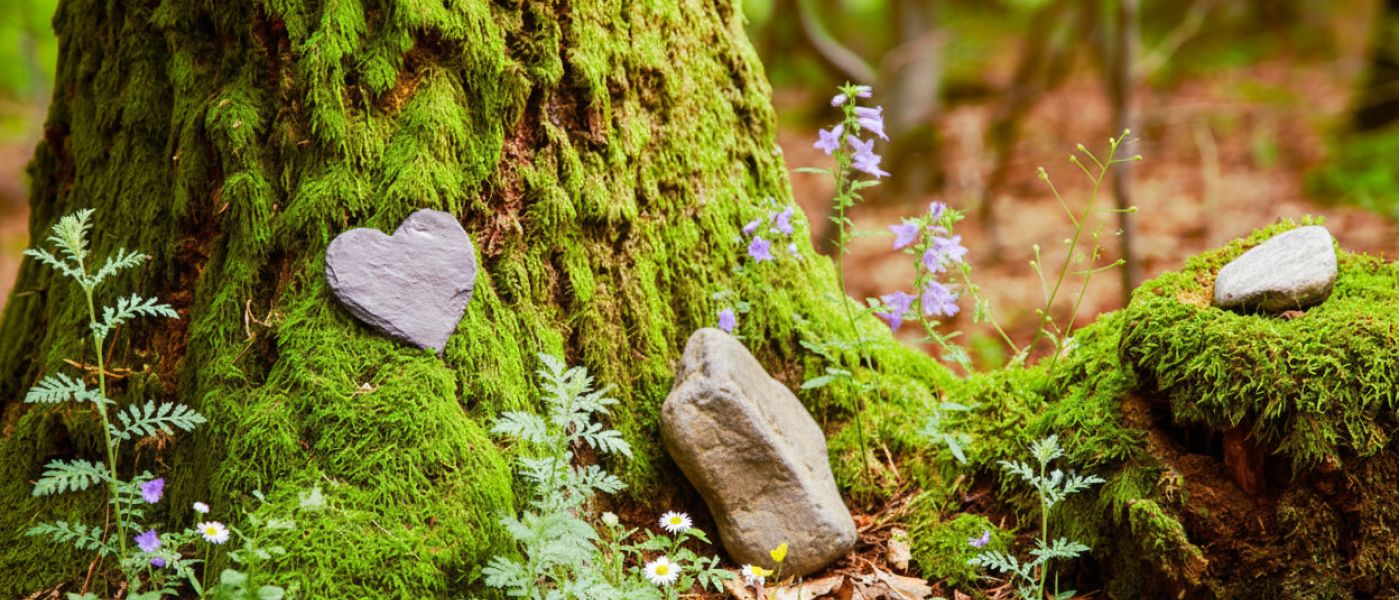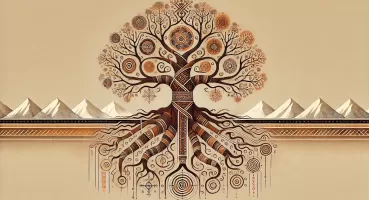Many years ago, when my grandfather passed away, the ancestral house in Ghaiyabari, near Kurseong, filled with quiet sorrow. People gathered from nearby villages, women sat close together, weeping in hushed tones, while the men spoke softly of his life, his integrity, and his small but steady kindnesses. The rites were performed in the old way, with rice grains, and ritual speeches that had passed unchanged through generations. When it was time, we carried his body to the edge of the nearby forest, a sacred patch of land that belonged to our family, where my grandmother and uncle had also been buried.
The Khambu Rai people have always practiced burials, though I recall a few exceptions, cases where individuals had embraced the Hindu way of life, and were cremated according to it’s customs. But my grandfather, a devout Kirati Khambu to his final breath, would have chosen no other path but a proper burial, rooted in our traditions. I had never visited that part of our land before. It lay deep within the property, dense with undergrowth, past the cardamom fields, across a narrow stream and a stretch of muddy terrain, where weeds grew wild. Among Rai families in the hills, there are no designated cemeteries. The dead are returned to the very soil they once tilled and walked and spoke to. Perhaps that is where the soul feels most at home.
When the rituals ended, five full days of chants, offerings, and sleepless vigils, a concrete tombstone was raised over his resting place, his name and age etched neatly upon it. At the time, it felt ordinary, almost expected. Yet over the years, I have found myself questioning whether this act truly belonged to our way of life. Traditions may shift with generations, but philosophies endure. And so I am left to wonder if, within the Khambu understanding of the world, the idea of claiming a fixed space upon the earth was ever truly ours.
In recent years, I have noticed how tombstones have quietly become the norm among the Rai people. Without much reflection, many have begun to mark burial sites with concrete or marble slabs, what we call Kapur, as if permanence could grant dignity to the dead. These graves, framed in cement or adorned with polished tiles, have become familiar across the hills. Yet, I often wonder whether this practice actually belongs to our lineage. Even in Nepal, especially in the Jhapa and Morang regions, where British rule never reached, similar tombstones have appeared. To me, these feel like later additions, the quiet inheritance of Christian or colonial influence, rather than a continuation of our ancestral ways.
In truth, a Khambu Rai grave is never meant to defy the seasons or the rain. It is a quiet affair, built to return gently to the earth rather than stand against it. A simple layer of clay is spread over the burial mound. The Khaling Rai dig a pit and cover it with bamboo lattice and straw to make a tomb-house known as Salamkam. While building this tomb-house, the side near the feet of the deceased is made slightly lower, and the side near the head a little higher, so that even in death, the body seems to rest in a natural slope of the land. Upon this chamber, the deceased’s personal items are placed, his walking stick, bamboo basket (doko), and other items.
Among the Kulung Rai people, if a person passes before the age of fifteen, a white mourning cloth, is tied in the names of two female relatives. For those older, four names are invoked, and the cloth remains above the grave for three months, bound between pairs of bamboo poles that sway softly with the breeze. This piece of fabric carries the weight of remembrance. The Khaling Rai grave-house is left standing, but the Kulung, after a year, dismantle it and mark the site with simple stones. This task is performed by two men known as Khamphochim, those believed to be untouched by spirits. When death comes by misfortune, the Chihan Ghar is taken down that very day, a humble gesture to restore balance between the seen and unseen worlds. Nowhere in these rituals lies the intent to immortalize the dead through monuments of stone. The Khambu grave, like the body it holds, must yield to rain and time, returning to soil, merging with the earth, and becoming life once more.
Among the Thulung Kirat Rai, burial is a deeply sacred, highly structured practice, guided by the type of death and the wisdom of the Shaman and the elders. Temporary structures, bamboo markers, and ritual objects are placed around the grave, and prayers are recited for the well-being of both the living and the departed. Even when children die or deaths occur unnaturally, the practices adapt, guiding the spirit without permanent monuments. In all of these customs, there is no notion of raising a tombstone or creating a permanent marker; the rituals emphasize spiritual guidance and ancestral connection rather than concrete memorials.
Why, then, have we come to set cold stones above our dead? If the Khambu Rai people are meant to live by the way of Sumnima (the divine earth-mother spirit), why seek permanence in marble or concrete, when our philosophy calls for harmony with the ever-turning cycles of nature? In life, we partake of the earth’s generosity, drawing nourishment from its fields and forests. In death, we are meant to give it back, to dissolve quietly into the soil that sustained us.
Reverence in Khambu Rai culture is expressed through the Samkhalung, the sacred hearthstone, where our forebears’ spirits linger, quietly watching over the living and guiding the household with gentle wisdom. In contrast, tombstones are not part of this tradition; they mark a space, but they do not nurture the ongoing cycle of life. Would it not be more in keeping with our worldview to plant a tree above the burial mound, a living sentinel that grows, blossoms, and bears fruit? Through its roots, it nourishes the soil, drawing life from the same earth that once cradled the deceased, and in turn sustains new life. In this way, even in death, we maintain our dialogue with the earth, giving back more than we take.
In Khambu philosophical understanding, death is neither a final ending nor a reason for sorrow alone. It is a return, a transformation, a rejoining of the eternal cycle that binds all living beings. To mourn by erecting stones is to misread the philosophy we inherit. As Kirati Khambus, our reverence is expressed through life itself: by planting, by nurturing, by letting the earth bear witness and remember. In this way, the cycle continues, and the memory of those who have passed becomes inseparable from the living world they once walked.
I know that my vision may not dissolve the colonial mindset we have inherited for decades. People will continue building tombstones, just as they always have. Yet I am certain, somewhere, someone will be touched by the notion of staying true to our worldview, even as traditions evolve. If my grandfather, who lived and breathed the Khambu way, were to look upon my perspective, I believe he would have agreed. And in that quiet approval, perhaps the cycle of life and memory will find its truest expression, not in a tombstone, but in the living earth itself.





Leave a Reply